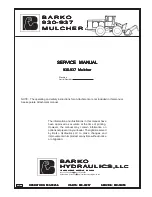
1
1: I
NTRODUCTION
Cruiser instruments are designed to operate from a 12 volt battery supply and
are supplied complete with sensors, displays and display mounting kits.
Prior to unpacking this instrument read and fully understand the
installation instructions. Only proceed with the installation if you are
competent to do so. Nasa Marine Ltd. will not accept any responsibility for
injury or damage caused by, during or as a result of the installation of this
product. Any piece of equipment can fail due to a number of causes. Do not
install this equipment if it is the only source of information and its failure could
result in injury or death. Instead return the instrument to your retailer for full
credit. Remember this equipment is an aid to navigation and not a substitute
for proper seamanship. This instrument is used at your own risk, use it
prudently and check its operation from tine to time against other data. Inspect
the installation from time to time and seek advice if any part thereof is not
fully seaworthy.
The surface of cruiser has an acrylic finish chemically bonded to a tough
plastic. To keep it looking good clean only with a damp cloth. Do not use
abrasive cleaners or solvents.
INSTALLING THE DISPLAY
2:
Cruiser instruments are waterproof when panel mounted and are designed
for open cockpit mounting.
Select a convenient position for the display on a panel or bulk head.
The site must be flat and the cavity behind the panel must remain dry at all times.
(The cable entry boss is not sealed to allow free passage of air to and from the
unit. This prevents misting of the display.)
The positions for the fixing holes can be marked on the panel using the drill tem-
plate which is an integral part of the packing carton. Before drilling check that
there is sufficient space behind the panel to route the cables and to allow access
to tighten up the wing fixing nuts.
Drill the five holes and check that the unit fits. It may be wise to connect the
cables before finally fixing the unit in position.
A sponge rubber seal is provided which should be fitted into the slot in the back
of the instrument.
Fit the instrument into the panel and tighten up the four wing nuts finger tight only.
It is important that the sponge rubber seal makes good contact with the panel or
water may get behind the unit and enter the cavity behind the panel.




































